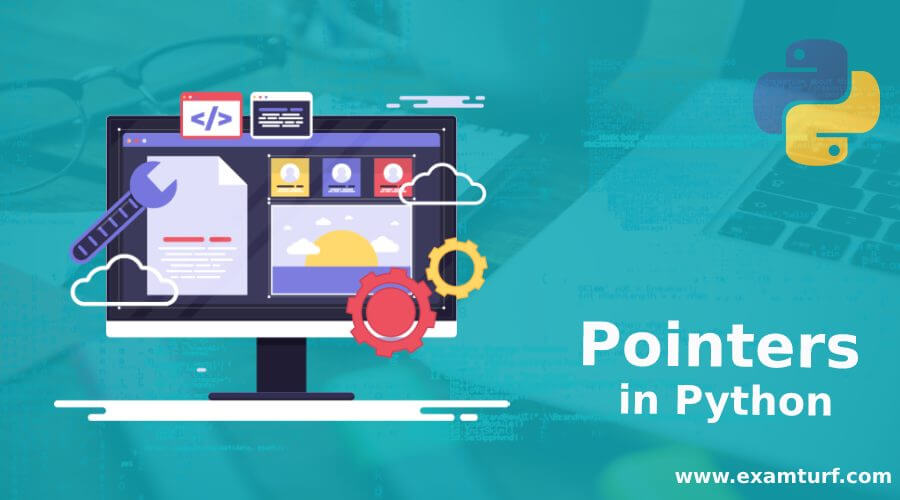
Introduction To Pointers in Python
The following article provides an outline for Pointers in Python. We already know Python’s basic definition, it is an object-oriented, high-level and interpreted programming language. This means the programmers who use Python programming language as the base language for their projects, big or small, can write very clear, logical and standard coding because of its programming structure and its object-oriented approaches. It was first developed by Guido Van Rossum and the first version was released in 1991. Python is freely available in the market as it is open-sourced thus making its usage applications extensive.
Just like Ruby and Pearl, Python is also considered to be a scripting language to develop several different types of web and software applications. It is mainly used to develop software applications, web applications, algorithm-based software applications of sorts and several other types. Python’s multi-faceted interface enables it to handle database systems which involves maintaining big data’s, reading and modifying them also. Python has an interpreter system that helps programmers to write and execute codes in python a lot faster than others thus helping them further to quickly develop software prototypes compared to using other programming languages. Python is a multi-platform compatible programming language, thus we can run it on Windows, Mac and UNIX systems also.
Key Takeaways
- Python is a very dynamic programming language in its overall architecture and building as it supports several features and systems which has been a tremendous help to the software developers to create much faster and better software or web applications.
- We all know python has several different types of features like variables, objects and pointers in it which has their own set of tasks for the overall functioning of Python.
- So the takeaway is that the features of python makes it unique and dynamic in nature making python’s application in numerous and also highly demanded in the current technological ecosystem.
What Is Python?
- Python in simple words is a programming language just like any other programming languages like Java, C, Ruby and Perl and most importantly it is a highly and commonly used programming language platform nowadays. As per the current market trends, demand for the Python programming language is very high because of its features and attributes such as it being object-oriented in nature and also it being a high-level and interpreted programming language. Python also pertains to dynamic typing and dynamic binding capabilities.
- This dynamic nature of python also supports multi-paradigm programming interfaces including structured and functional programming. Python also has a strong and extensive standard library making it a very interesting and convenient programming-based software development, web development tool for the commercial market system.
What Is A Pointer?
- Pointers are basically a virtual location in a programming language that is used for storing memory addresses.
- It is in fact a variable that acts as a storage space for the various types of variable and memory item addresses.
- Pointers can be found in all the different types of programming languages like C, Java and like Python here.
What Are Pointers, Variables And Objects In Python?
Given below are the pointers, variables and objects in Python:
1. Pointers in Python
The real question arises is does Python actually have pointers or support it? The real truth is, it is debatable and doesn’t give us a clearer picture. Also, the features and the characteristics of pointers like in C and C programming matches perfectly, the usage of pointers is explicit and vital to the development of C and C programming, that is pointers actually help increase the efficiency of C and C coding but Python is already efficient and dynamic in nature thus the relationship between Python and Pointers is implicit in nature.
Pointers may exist natively or by default at the time of the creation of Python language but it has no significance at all. Pointers tend to have a complexity in their usage but Python is a more dynamic type coding language that was developed for fluency and speed. So we can see that Python doesn’t really support the usage of pointers in its programming structure.
2. Variables in Python
Variables are actually memory locations where data values are stored. What type of data values are stored in these memory locations, it is determined by the data types of those variables. The values can be of integer, character or decimal types, thus the variables can store different types of data values in python to be used for specific purposes whenever required accordingly.
3. Objects in Python
In python, almost all things are an object type like variables, classes and also functions. These object types contain three parameters of data which are reference count, type and value, each performing separate tasks like memory management, type safety at the time of execution and finally giving the actual value related to the object sequentially.
Recommended Articles
This is a guide to Pointers in Python. Here we discuss the pointers in python and also discuss its definition, variables, pointers, objects and its description. You can also go through our other suggested articles to learn more –
Are you preparing for the entrance exam ?
Join our Python test series to get more practice in your preparation
View More